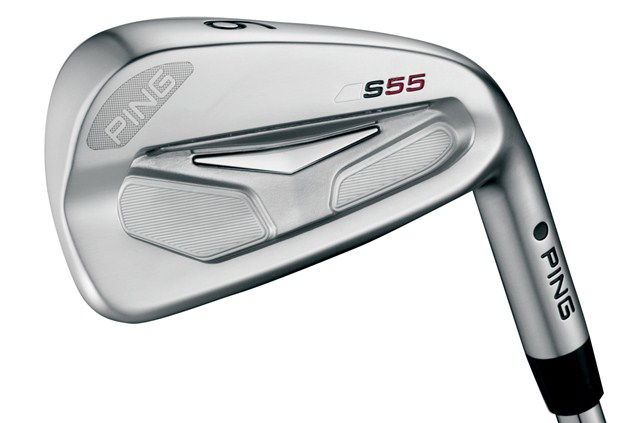TaylorMade JetSpeed fairway wood: review
Is the JetSpeed fairway wood longer and more playable than ever before? We set to find out

TAYLORMADE claims it's new JetSpeed fairway wood is the longest and most playable fairway wood it's ever created - shock, horror - so we headed onto the range with a Flightscope monitor to find out.
On first look of the JetSpeed 3-wood, tested out in 15-degree, stiff shaft (the same specs as I tested out the RBZ Stage 2 of 2013), I notice a much shallower face than its elder brother - the RBZ Stage 2 (the range of metalwoods that JetSpeed is replacing in 2014) - as well as a major switch away from white to a beautiful matte black finish that reduces glare.
The shallower face is particularly apt for the JetSpeed name as it presents a sleek, stealthy appearance - a bit like an F-22 Raptor ready for takeoff.
It's visually more appealing and the alignment aid is much easier in my book, with a similar 'V' shape design to the back of the crown, but it's far less confusing. There's less going on and I like that - I think it probably has something to do with the dubbed down graphics.
One of my criticisms of fairway woods in the past, and forgive me if I'm alone in this thought, is that some clubs lack a decent alignment aid. We have it on a driver. We have it on a putter. Why not on a fairway wood? TaylorMade is one of the best at this.
JetSpeed, like the RBZ Stage 2, still features a Speed Pocket in the sole, close to the face, but this time around it's been radically redesigned. It's smaller and in a different shape, which TaylorMade says accounts for less weight while remaining just as efficient at boosting the speed of the clubface.
The weight saved by the new SP is redistributed strategically within the clubhead to move the CG lower and forward - the location, as with the case of the RBZ Stage 2 fairway wood, that TaylorMade has proven promotes fast ball speed, low spin and higher launch.
But what I love about the JetSpeed in comparison to the original RBZ and RBZ Stage 2 fairways and rescues, is that the Speed Pocket this time around is filled with a polymer to keep debris out and absorb that unwanted vibration without slowing down the clubface. It's a worthy addition and one that was much needed.
I also felt the JetSteel clubface - an ultra-strong steel alloy - was promoting a much better sound than the rather 'tinny' noise I've encountered with previous TaylorMade fairways. It's a heartier 'thwack' at impact, pretty much exactly like the SLDR fairway I tested last week.
The heavier Matrix Velox 69g shaft also felt nicer in the hands and it certainly allowed me to control the clubhead better through the ball, as well as promote solid accuracy. The length of shaft was also a little longer which probably explains the extra bit of firepower I ended up achieving. The JetSteel clubface - an ultra-strong steel alloy - also felt it was adding a bit of speed off the face.
TaylorMade claimed better players could achieve up ten additional yards with the new RBZ Stage 2 fairway wood with COR boosting Speed Pocket.
While I'd like to think I stumble into that category, just, I didn't quite reach the ten yards that they promised - then again my ball speed isn't quite as strong as TaylorMade's robot tester! - but I did manage to find a solid five with the RBZ Stage 2 on the RBZ, running balls out to 230 yards.
This time around, I can safely say I've now flown past the ten yards I was promised on the original RBZ with an eight-yard gain on the RBZ Stage 2. Of the 20 balls I struck on the range with Flightscope, my average reached 238.7 yards. In comparison with the better-player SLDR fairway wood I tested out, I was two yards up following an average of 237 distance.
Ball flight was a little higher and a little more pleasing with the SLDR fairway but spin rate with the JetSpeed was certainly much lower and that only contributed to better roll out. TaylorMade says JetSpeed fairways reduce spin by 200-300 RPM compared to the RBZ Stage 2 and I'd have to say I agree - although that's not usually difficult for me as I create very little spin with a 3-wood anyway.
The shallower face was also straightening me up nicely. This is by the far the most forgiving TaylorMade fairway wood I've hit for a long time. The face is shallower by some 2mm in comparison to RBZ Stage 2 as it brings the CG in lower in relation to the centre of the face to make it easier to get airborne. Overall I was enjoying a high-launching, low-spinning fairway wood that was flying down my intended 200-yard marker.
Verdict
The 3-wood, for me at least, is one of the hardest clubs to strike cleanly and get airborne. Off the deck on the range the JetSpeed fairway wood in 15-degree was performing every bit like a hybrid. To be able to hit the ball like a hybrid and with fairway wood distance is ideal. If anything, it's bordering driver distance for a shortie like myself!
JetSpeed fairway wood offers a tremendous combination of distance and ease of launch. It's easily the longest and most playable fairway wood TaylorMade has ever created and I'd recommend it to anyone thinking of upgrading from the RBZ Stage 2.
Click here for TaylorMade JetSpeed fairway wood owner reviews. Click here for our TaylorMade JetSpeed driver review. Click this link for our 10 of the Best: Fairway Woods 2013 test.


